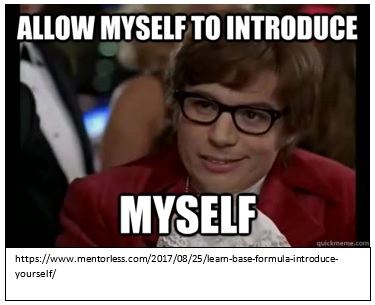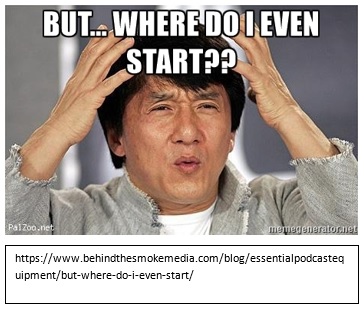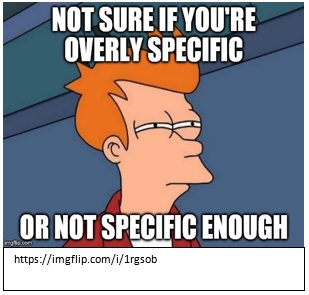You have finished your research, developed a thesis, constructed an outline and are now ready to begin writing your paper. Despite all of the ideas, points, examples, and research running through your mind, you can’t seem to get started. Where do you begin? How do you start your essay? Writing an introduction can be a very daunting task for students, especially when they are pressed for time. Even with all the research and knowledge one may have on a topic, it can still feel awkward and stressful to be face-to-face with a blank page. This post will examine some of the struggles students face when writing introductions, and the strategies available to help develop a better understanding of where to begin when writing an academic paper.
What is an Introduction?

Think of an introduction as a blueprint for your essay. Introductions are meant to foreshadow the structure of your paper, while providing clarity and background context for the reader. By outlining your arguments, intentions, and main points, you are able to demonstrate what the paper will be about and why the audience should care. Introductions should aim to do three things: inform, introduce, and engage the reader.
Reasons Why Students Struggle with Introductions and Writing Habits to Help
There are many reasons why students find it difficult to write an introduction. Here are some of the main challenges students face and possible ways to help combat the struggle of introducing your paper.
A. Not Sure How to Start?

It can feel awkward to just sit down and start writing an introduction. Oftentimes, students may have difficulty deciding what information to include in their introduction, especially given that they have not yet had the chance to talk about their topic and main issues. After all, “if you haven’t gone on the journey yet it is difficult to map where you have been” (Boyne, 2004).
Introductions do not have to be the first thing you write. If you are unsure about the direction of your paper, it is perfectly acceptable to write your introduction last. This ensures you have a good understanding of all the major points you wish to outline, and it can help you to clarify your overall thesis and argument of the paper. Some people find it more helpful to get their ideas out first and then edit and refine their work later. This approach gives the writer a chance to work on the body paragraphs first and the go back to complete the introduction and conclusion after the ideas have become more refined.
B. Avoid Clichés and Capture Your Audience’s Interests

Since the dawn of time students have been trying to use catchy “hooks” to spice up their paper. By focusing too much on trying to make a paper flashy, students can lose sight of the topic and rely on boring clichés because they are unsure of what else to include. This myth about creating a “hook” for a paper leads students to begin with cheesy quotations, dictionary definitions or gratuitous personal preambles. For example, “Oxford dictionary defines,” “At first I felt,” or my personal favourite, “Since the beginning of [time]” are common and clichéd ways to start an essay. This type of introduction takes the focus away from the topic being discussed, and does not effectively work to help outline the main point of the paper.
Although there is nothing wrong with including definitions or quotations in an introduction, keep in mind that they should add to your overall point. In fact, defining the terms you use throughout the paper can be a very effective way to make your argument clear, but be sure that the definitions are both relevant to your discussion and add to the focus of your paper. This sentiment remains the same in regards to quotations; be sure that the quotation you use captures the main focus of your writing and is not simply a filler or a ploy to get the audience’s attention. It is important to remember that the information you display in your introduction must have a clear link to your topic and argument instead of solely being for the purpose of catching the reader’s attention (Boyne, 2005).
C. Think Context, Not Generalizations
A good way to think about the introduction of a paper is to acknowledge a tradition of inquiry. Instead of focusing on broad claims, try to think about your paper in the context of an overall discussion on the topic. Providing specific examples, background information, academic discourse, anecdotes, or outlining dilemmas surrounding the topic can help ensure you are providing relevant information to the reader and giving them a proper background understanding of the topic.
By acknowledging a tradition of inquiry, an introductory statement such as “Since the dawn of time students have been trying to use catchy ‘hooks’ to try and spice up their paper” can be transformed into, “A problem students face when writing introductions is the perceived need for ‘hook’ statements to draw the reader’s attention, which results in the use of clichés and overgeneralizations, defeating the point of hooking the reader in a new or interesting way” (Boyne, 2005; Giltrow, 2009). This example demonstrates the current discourse on the topic through the acknowledgement of authors with similar research and beliefs. By acknowledging the tradition of inquiry, the reader is able to gain a better understanding of the paper’s focus and the problem being presented by the writer; the reader also gets a sense of where the paper is headed.
D. Overcompensation and Being Too Specific

Another thing to consider is the idea of overcompensation for generalization. This means that instead of giving the reader a broad statement, you use a blunt statement of intent, or an assumption of the audience’s knowledge in an attempt to remain focused on the specifics of your assignment. Although it is important to not be overly general with an introduction, depending on the assignment instructions, professor, etc., you must also make sure that your argument is clear to the reader. Usually, assuming the reader does not have any background information on the topic will help to ensure you are describing the topic and your argument clearly and effectively.
With Every End Comes a New Beginning
Hopefully this post has helped ease some of the stress of writing an introduction and gives you some strategies that can help you outline your topic effectively.
Now, if I could just figure out how this should end…
For more information on writing introductions, or any other writing and study skills inquiries, visit our website for writing resources (specifically, handouts on “Introductions and Conclusions” and “Ten Essential Features of Academic Writing”).
Best Wishes,
Rileigh
Peer Mentor
References
Boyne, M., Armstrong, M. & El Komos, M. (2005). Thinking it through: a practical guide to academic essay writing. (Third ed.) Peterborough: Trent University.
Giltrow, J., Gooding, R., Burgoyne, D. & Sawatsky, M. (2009). Academic writing: An introduction. (Second ed.) Toronto: Broadview Press.
